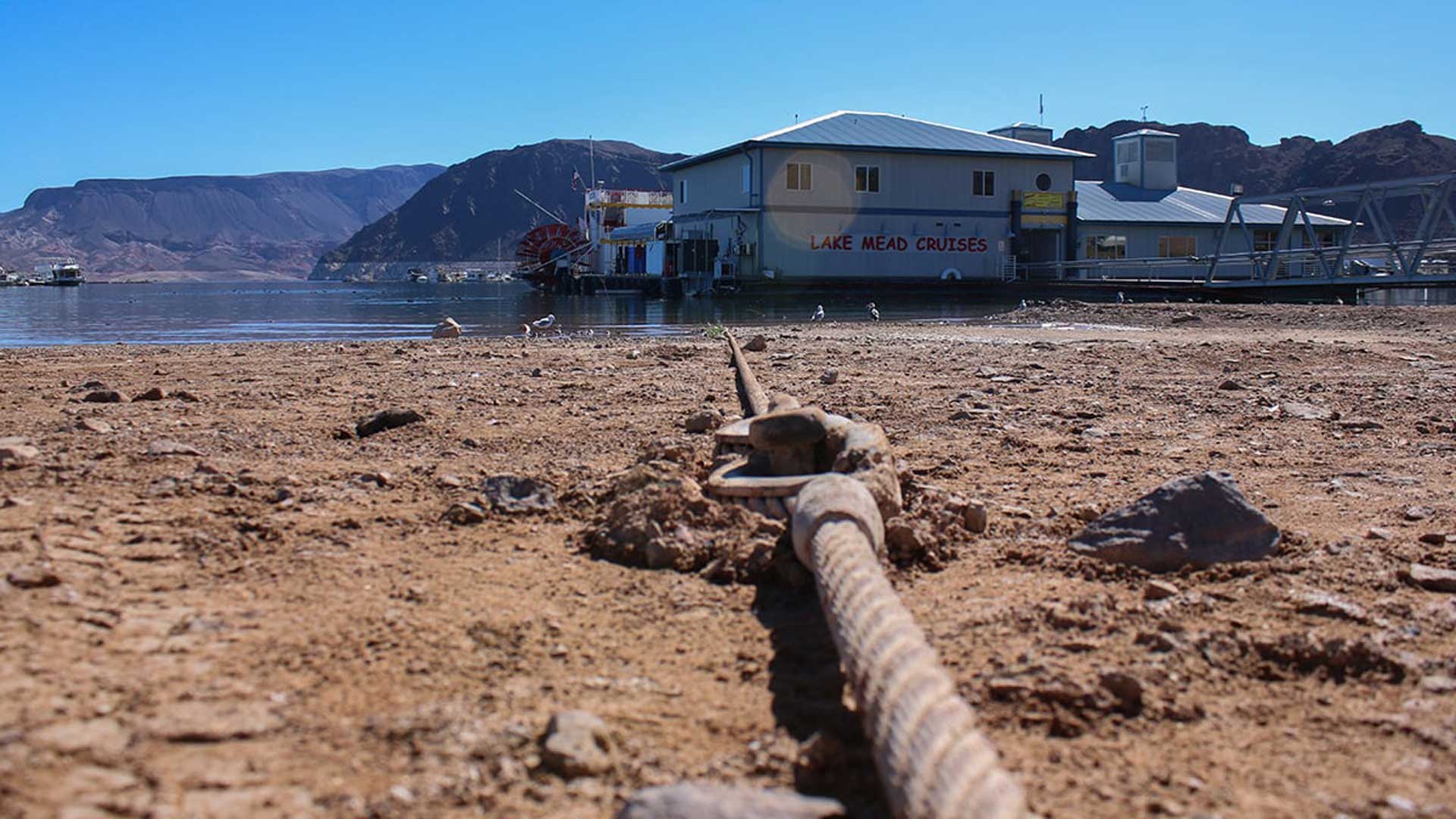 After two decades of drought, parts of Lake Mead that were once underwater have been exposed as the lake falls to historically low levels.
After two decades of drought, parts of Lake Mead that were once underwater have been exposed as the lake falls to historically low levels.
Hefty snowfalls that fed the Colorado River in recent weeks may slow the water level decline of Lake Mead on the Nevada-Arizona border, according to some experts.
Forecasters now expect Lake Mead to finish this year around 1,027 feet elevation, about 19 feet lower than its current level.
But that’s about 7 feet higher than the 2023 end-of-year elevation in the bureau’s forecast from last month, according to the Las Vegas Review-Journal.
The newspaper said Lake Powell, the reservoir on the Arizona-Utah border, now is expected to finish this year at 3,543 feet or 16 feet higher than last month’s forecast and about 19 feet higher than its current level.
While the projections have improved with the snowpack, the forecasted levels mean that Lake Mead would remain in shortage conditions for at least a third consecutive year.
“I think the big picture is that we’re dealing with some very long-term deficits along the Colorado River system,” Steph McAfee, the state climatologist and a professor at the University of Nevada, Reno, told the Review-Journal. “A good year is good news. And I don’t want to diminish that. But it’s not going to fix the problem.”
The newspaper said the basin has been aided heavily by a series of nine atmospheric rivers that battered much of the West over a three-week period that started days after Christmas.
Snowpack numbers across the region are far above average, with some parts of California and Nevada currently near or more than 200 percent of average for this point of the year.
The majority of the runoff for the Colorado River will be snow melting off the Western Rockies where the snowpack currently sits at a healthy 146 percent of average, the Review-Journal reported.
According to the latest projections from the Colorado Basin River Forecast Center, the April through July snowmelt runoff is expected to swell the river to 117 percent of its 30-year average as that snow melts and runs downstream to Lake Powell.
That’s a substantial uptick from the 79 percent of average that the center had forecasted for the river last month.
McAfee said the question now is whether that wet trend will continue — something that is very difficult to predict for the upper Colorado River basin.

By submitting your comments, you hereby give AZPM the right to post your comments and potentially use them in any other form of media operated by this institution.